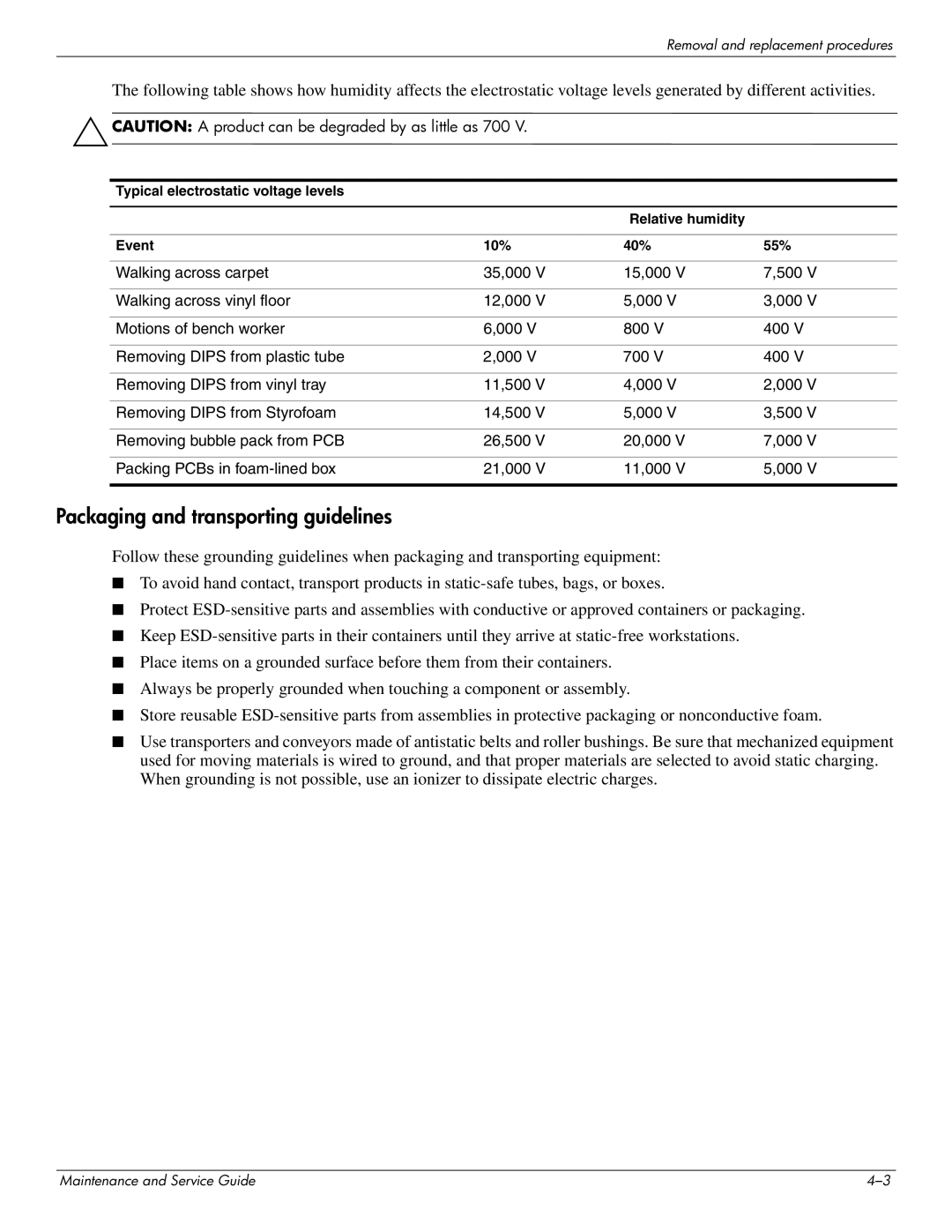
Removal and replacement procedures
The following table shows how humidity affects the electrostatic voltage levels generated by different activities.
ÄCAUTION: A product can be degraded by as little as 700 V.
Typical electrostatic voltage levels
|
| Relative humidity |
|
|
|
|
|
Event | 10% | 40% | 55% |
|
|
|
|
Walking across carpet | 35,000 V | 15,000 V | 7,500 V |
|
|
|
|
Walking across vinyl floor | 12,000 V | 5,000 V | 3,000 V |
|
|
|
|
Motions of bench worker | 6,000 V | 800 V | 400 V |
|
|
|
|
Removing DIPS from plastic tube | 2,000 V | 700 V | 400 V |
|
|
|
|
Removing DIPS from vinyl tray | 11,500 V | 4,000 V | 2,000 V |
|
|
|
|
Removing DIPS from Styrofoam | 14,500 V | 5,000 V | 3,500 V |
|
|
|
|
Removing bubble pack from PCB | 26,500 V | 20,000 V | 7,000 V |
|
|
|
|
Packing PCBs in | 21,000 V | 11,000 V | 5,000 V |
|
|
|
|
Packaging and transporting guidelines
Follow these grounding guidelines when packaging and transporting equipment:
■To avoid hand contact, transport products in
■Protect
■Keep
■Place items on a grounded surface before them from their containers.
■Always be properly grounded when touching a component or assembly.
■Store reusable
■Use transporters and conveyors made of antistatic belts and roller bushings. Be sure that mechanized equipment used for moving materials is wired to ground, and that proper materials are selected to avoid static charging. When grounding is not possible, use an ionizer to dissipate electric charges.
Maintenance and Service Guide |
